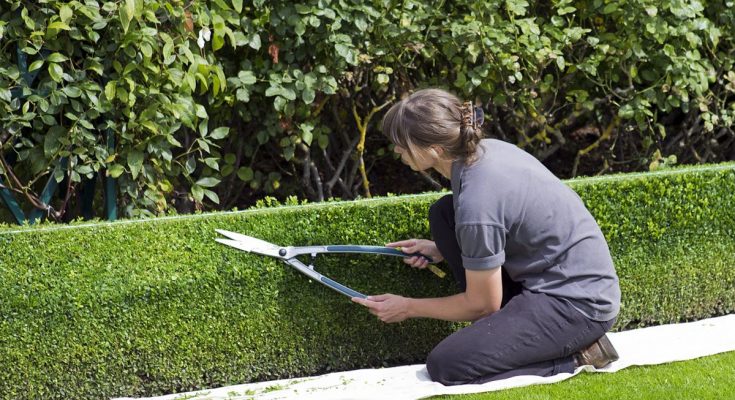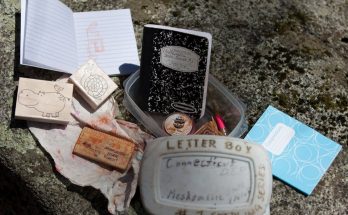Topiary is the practice of training perennial trees and shrubs by clipping the foliage and twigs to develop and maintain clearly define shapes. The term topiary is also used for the trees and plants which have been shaped in this way.
Topiary is a form of living sculpture and the art of topiary dates back to ancient Rome in Europe and ancient China and Japan in Asia.
Today, some topiary enthusiasts use wire cages in their topiary, but that is a modern invention. Old-school topiary rely on a steady hand.
Which plants are used?
The typical plant chosen for topiary will be an mostly woody evergreen with small leaves or needles capable of forming a dense foliage. Plants with a compact and/or columnar growth habit works best.
Examples of popular choices:
- European box (Buxus sempervirens)
- Bay laurel (Laurus nobilis)
- Myrtle (of the genera Eugenia or Myrthus)
- Arborvitaes / Thujas / Cedars of the Thuja genus.
- Holly (of the Illex genus)
- Yew (of the genus Taxus)
Topiary history
Early topiary in Europe
Topiary was used extensively in ancient Rome and is mentioned both in Pliny’s Natural History and by Martial, creator of the modern epigram. Gaius Matius Calvinus, who moved in the same circles as Julius Ceaser, helped promote topiary among the Romans by having topiary in the shape of animals, obelisks and cyphers in his Tuscan villa.
Asian topiary
In ancient China and Japan, the aim of topiary was traditionally to achieve an artful expression of the “natural” form of old pines. Japanese bonsai and Chinese penjing can both be seen as off-shoots of topiary.
One of the Asian topiary variants that most closely resembles European topiary is the Japanese cloud-pruning, where plants are clipped to form cloud-like shapes that will catch the snow in winter and give the impression of a white cloud. There is also karikomi, a technique where shrubs and trees are clipped into large curved shapes and sculptures, and hako-zukuri where shrubs are formed like boxes and straight lines.
Renaissance topiary revival
The 1500s, topiary grew popular in England and several other European countries. It wasn’t just the wealthy aristocrats who sported topiary in their lavish gardens; the hobby reached ordinary folks as well. There is for instance a text written by Barnabe Googe in the late 1570s where he describes how women (not ladies) clipped rosemary bushes “as in the fashion of a cart, a peacock, or such things they fancy”.
Topiary remained in fashion throughout the 17th century, with bushes and shrubs being clipped into increasingly elaborate shapes. In 1618, the cleric and garden expert William Lawson writes how it is possible for a gardener to “(…) frame your lesser wood to the shape of men armed in the field, ready to give battell: or swift-running Grey Houndes to chase the Deere, or hunt the Hare.”
Examples of popular shapes:
- Balls
- Cubes
- Cones
- Pyramids
- Obelisks
- Tapering spirals
- Tiered plates
18th century decline
In the 18th century, topiary fell out of favor in England and became seen as old-fashioned and poor in taste. Topiaries were removed from the fashionable aristocratic gardens, but remained in cottage gardens among the ordinary people of the land.
19th century revival
In the 19th century, topiary once again became popular in England. One of the driving forces were the gardener John Loudon who in the 1840s wrote about missing the topiary that had been cleaned away from the gardens of England during the previous century.
Eventually, architectural topiary was reintroduced in gardens at Elvaston Castle in Derbyshire, where public viewings were held throughout the 1850s. These viewings had a huge impact on contemporary English gardening trends and architectural topiary with enclosed garden spaces began to pop up all over. This is turn paved the way for a revival in sculptural topiary.





